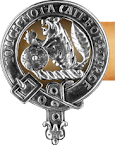Today's is one of my political heroes of the past. And he is my husband's 1st cousin, 7 times removed.
American Patriot and Statesman, Patrick Henry.
The following BIO on Patrick Henry comes from FindAGrave and is written by Kit and Morgan Benson:
| Birth: | May 29, 1736 |
| Death: | Jun. 6, 1799 |
American Patriot. He is best remembered for his stirring phrase "Give Me Liberty or Give Me Death." Born in Hanover County, Virginia, he attended public school for only a short time, and was taught by his father, who had a good education. He began a career as a shopkeeper, but was a poor businessman and soon deeply in debt. He then studied law and received his attorney's license in 1760, which helped his oratory skills when he had to argue cases in court. In 1764, Henry was elected to the Virginia House of Burgesses, where he soon became a leader of the frontier people against the old, established plantation aristocracy. His speech in the House of Burgesses in 1765 against the Stamp Act is considered one of his greatest orations. In it he argued, "Caesar had his Brutus, Charles the First his Cromwell, and George the Third may profit by their example. If this be treason, make the most of it." In 1774, he was elected a delegate to the First Continental Congress, and the following year, to the Second Continental Congress. He left the Congress before the resolution for independence was put to a vote, to become Commander-in-Chief of Virginia's militia, a position he resigned in February 1776 when he realized his limitations and lack of military experience. A few months later, he became a member of the committee to write the Virginia Constitution. As soon as Virginia eliminated their royal governor and set up a constitution government, Patrick Henry was elected as its first Governor, and moved into the palace in Williamsburg, where the English royal governors had lived. A hard working administrator, Henry worked to solve the many problems caused by the American Revolution. He recruited the state's quota of 6,000 men for the Continental Army, as well as 5,000 men for the Virginia Militia. He obtained and supplied the Continental Army with clothing, shoes, and cattle, as well as lead and gunpowder for ammunition. He was reelected in 1777, 1778, 1784 and 1785. During his second term as Virginia Governor, he supplied the George Rogers Clark Expedition, which conquered the Northwest Territory from the British. In 1788, Henry served in the Virginia delegation to ratify the US Constitution. Although he was initially against ratification of the US Constitution because he believed it lessened the rights of the states, after its ratification, he joined the Federalist Party and supported the document. He was largely responsible for the adoption of the first ten amendments to the Constitution, which we call the Bill of Rights. As public service had left Henry in debt, he returned to his law practice in 1788, and soon became a successful criminal lawyer. In 1794, he retired to his estate near Appomattox, Virginia. In his remaining five years, Henry was offered many public offices, including US Senator, Minister to Spain, Minister to France, Secretary of State in President Washington's cabinet, and Chief Justice of the Supreme Court, all positions which he refused. In 1796, he was elected Virginia Governor for a sixth time, but refused to take office. Finally, his close friend George Washington convinced him to run for representative in the Virginia State Legislature, and after winning the election, he died before he could take office. Inscription on crypt reads: In Memory of Patrick Henry Born May 29, 1736 Died June 6, 1799 His fame his best epitaph Patrick Henry, as well as his second wife, Dorothea Dandridge Henry, are buried on the old Red Hill Plantation [now called the Red Hill Shrine] in Charlotte County, Virginia. The old Red Hill Plantation. The Henry and Carter Cemetery on Red Hill Plantation. | |


















No comments:
Post a Comment